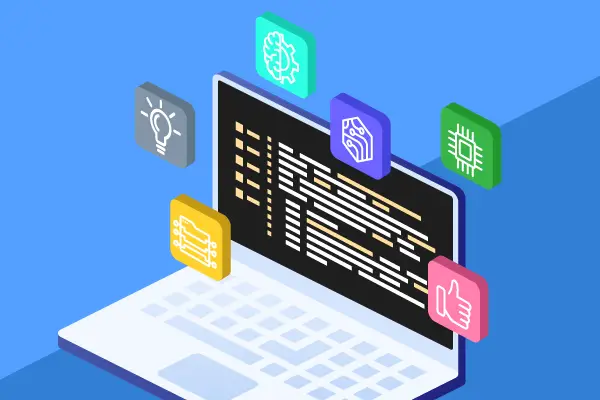Voice interaction has revolutionized the way we interact with technology, allowing us to communicate with devices and services using natural language. This advancement has been made possible by integrating artificial intelligence (AI) and natural language processing (NLP) technologies. Among the pioneers in this field, Apple’s Siri stands out as one of the most recognizable and influential voice assistants. Over the years, Siri has evolved and matured, contributing significantly to the development of NLP and reshaping the way we interact with our devices.
This article explores the remarkable evolution of Siri, tracing its path from a humble voice recognition tool to a sophisticated AI companion while also exploring Apple’s significant contributions to the field of NLP. As we analyze, we uncover the intricate advancements, breakthroughs, and challenges that have marked Siri’s trajectory, illuminating the broader implications for voice interaction and AI in our increasingly interconnected world.
The Dawn of Voice Interaction in Apple’s
The concept of voice interaction dates back decades, but it wasn’t until the 2010s that it began to gain widespread recognition and adoption. Apple’s Siri, first introduced in 2011 with the release of the iPhone 4S, marked a pivotal moment in integrating voice interaction into everyday technology. Siri was groundbreaking in its ability to understand and respond to spoken language, initiating a new era of human-computer interaction.
Siri’s Early Days and Evolution
Siri’s initial incarnation showcased the potential of voice assistants, allowing users to perform tasks like setting reminders, sending text messages, and making phone calls through voice commands. However, the early version of Siri had limitations in understanding complex queries and nuanced language patterns.
Over the years, Apple invested heavily in improving Siri’s capabilities. Each iteration refined speech recognition, language understanding, and context awareness. Introducing machine learning techniques and neural networks greatly enhanced Siri’s ability to interpret natural language and provide more accurate responses.
Siri on MacBook Air: Your Virtual Assistant at Your Fingertips
Siri has seamlessly integrated into the macOS ecosystem, including the MacBook Air. With Siri by your side, your MacBook Air transforms into a powerful tool that responds to your voice commands and helps you get things done more efficiently.
Siri on the MacBook Air lets you control various aspects of your device using just your voice. From opening applications or searching for Macbook Air replacement parts to setting reminders and sending messages, you can accomplish many tasks without touching your keyboard or trackpad. This hands-free interaction is particularly useful when you’re multitasking or when your hands are occupied.
Siri learns from your usage patterns and preferences, providing a more personalized experience. It can offer suggestions based on your previous actions, making accessing frequently used apps, documents, or websites easier. This adaptability helps streamline your workflow and ultimately saves you time.
MacBook Air users can take advantage of Siri’s integration with various productivity apps. Whether you need to schedule appointments, create to-do lists, or set up meetings, Siri can help you manage your tasks efficiently. Its compatibility with applications like Calendar, Reminders, and Notes ensures you stay organized and focused.
Apple’s Contributions to Natural Language Processing
Apple’s commitment to advancing natural language processing has been a driving force behind Siri’s evolution and the broader field of voice interaction. Several key contributions have shaped the landscape of NLP:
- Deep Learning and Neural Networks: Apple embraced deep learning and neural network technologies to enhance Siri’s language understanding. These techniques enabled Siri to comprehend context, tone, and intent better, making interactions more natural and fluid.
- On-Device Processing: Privacy has been a cornerstone of Apple’s approach. Apple focused on on-device processing to ensure user data security, enabling Siri to perform many tasks without sending data to external servers. This approach minimized privacy concerns and set new standards for data protection.
- Multilingual Support: Siri’s ability to understand and respond in multiple languages showcased Apple’s commitment to linguistic diversity. This achievement required significant advancements in language modeling and translation algorithms.
- Domain Expertise: Apple extended Siri’s capabilities beyond general tasks, incorporating domain-specific knowledge for entertainment, sports, and local recommendations. This required sophisticated semantic analysis and integration of specialized databases.
- Voice Synthesis: Apple’s investment in voice synthesis technology made Siri’s responses more natural and expressive. This involved training AI models to mimic human speech patterns and emotions.
- Contextual Understanding: Siri’s understanding of context was a major breakthrough. Apple’s advancements in context-aware processing enabled Siri to maintain more meaningful conversations and provide relevant responses based on ongoing dialogues.
Impacts and Future Directions
Apple’s relentless pursuit of enhancing Siri’s capabilities has had far-reaching implications. The advancements in natural language processing have not only shaped the evolution of Siri but have also influenced the entire voice assistant landscape. Competitors and developers have been compelled to raise their standards, benefiting users through improved voice interaction experiences.
The fusion of AI, NLP, and voice interaction holds tremendous potential. As Apple and other tech giants push the boundaries of what’s possible, we can anticipate even more sophisticated voice assistants that seamlessly integrate with various aspects of our lives, from smart homes to professional tasks.
The Bottom Line
The evolution of Siri and Apple’s contributions to natural language processing is a testament to AI’s transformative power in reshaping how we interact with technology. From its early days as a novel voice assistant to its current status as an integral part of millions of devices worldwide, Siri’s journey highlights the remarkable advancements in NLP. It underscores the ongoing commitment to enhancing user experiences. As we progress, the innovations pioneered by Apple will continue to inspire and drive the future development of voice and AI-driven interactions.









